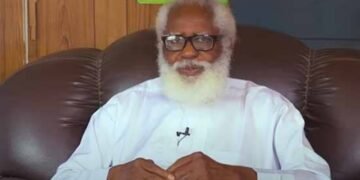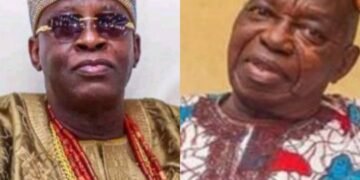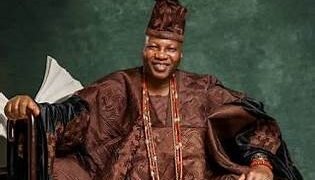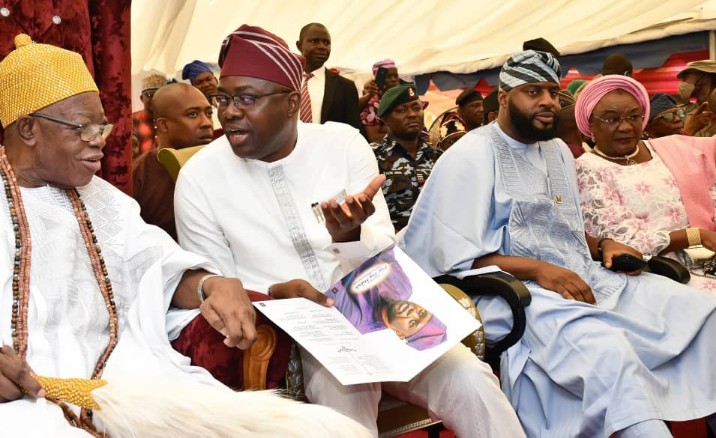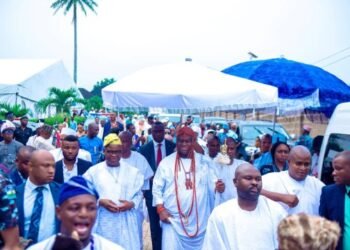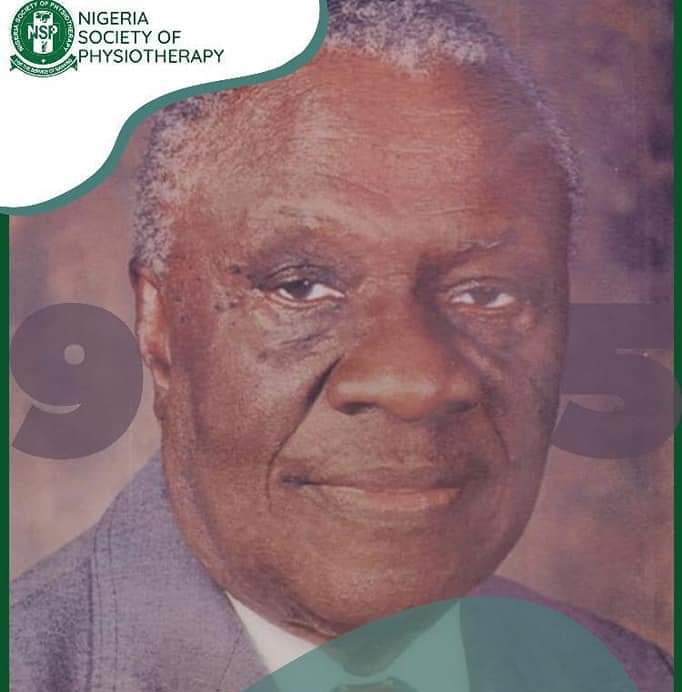“There are 11 junior kings now in Ibadan. It has evolved from a city of knights with a reluctant crown to a city of major and minor royals in competition for eras.”
Ile Ife and Oyo Ile were at the very core of the cultural and political essence of the Yoruba. While the whole of the Yoruba have managed to preserve Ile-Ife as home for all, Oyo Ile, some 200 plus years ago, was lost to the pillage of the Fulani and to its own internal political sins and crimes.
Ile-Ife and (New) Oyo have remained polar powers; sometimes they compete bitterly with their leaders playing captains for opposing forces. In good times, they ‘giraffe’ and do copy-and-paste.
I was present when the late Ooni of Ife, Oba Okunade Sijuwade Olubuse II, crowned his senior chiefs and Baales in February 2009. I was the spokesman of the Olagunsoye Oyinlola government in Osun State which approved the crowning of those chiefs and Baale from one end of the ancient kingdom to the other.
The Ooni today, in his majesty and glory, wears his crown; his top chiefs wear their own crowns with the understanding that Cat will remain Cat and Tiger will remain Tiger.
It was an unusual arrangement but the decision was a compromise for peace; a key component of the package that resolved the 100-year-old Ife-Modakeke problem. Ife senior chiefs got beaded crowns; Ogunsua of Modakeke got his too – all on the same day and directly from the hands of the Ooni of Ife. Since then, there has been peace now and forever more.
Ibadan as the successor-city to the power and glory of Old Oyo is never tired of being in the news. 11 High Chiefs became oba in Ibadan last Friday. A similar event was held in the same place for the same purpose in August 2017 – six years ago.
The 2017 mass coronation unraveled soon after it was done. That it failed with the last government and is successful with the incumbent is a testament to two factors: approach and lessons taught by history.
In Ile-Ife in 2009, it was the Ooni who granted and gave the crowns to the chiefs – with the approval of the governor. In Ibadan in 2017, the governor did the crowning directly; the reigning Olubadan, Oba Saliu Adetunji, kicked and told Governor Abiola Ajimobi that it would be “an exercise in futility” for the governor to crown Ibadan chiefs and Baales without the consent of the Olubadan. And it was.
In 2023, the reigning Olubadan, Oba Lekan Balogun, learnt from history and wrote to Governor Seyi Makinde, seeking approval to crown his chiefs. The Olubadan got the approval and did the crowning of his chiefs himself on Friday, 7 July, 2023. Unlike what we saw in 2017, the sea of Ibadan has been remarkably calm.
The peace of the twig is the peace of the bird. When chiefs fight the king, the town feels the tremor. The late Olubadan Adetunji saw the coronation of his chiefs by Ajimobi in 2017 without his consent as a rebellion, a direct assault on his paramountcy in Ibadan.
With the backing of the state government, the High Chiefs actually rebelled; they stopped attending meetings and functions. The ‘rebellion’ endured till there was a change of government in May 2019.
Such a ‘rebellion’ wasn’t a new thing in Ibadan. In 1936, Ibadan chiefs waged a ceaseless war against Olubadan Okunola Abasi Aleshinloye. They stopped attending meetings where their lord presided. The colonial government responded by not giving them their monthly allowance because “they did not work.” But that did not deter them from carrying on with their ‘war’.
On one occasion, the chiefs appeared before the Resident without Olubadan and the white man asked them: “Have you ever seen a man who cuts off his head and still walks on the road without his head? They answered: ‘We’ve never seen such’. He then said to them: ‘Do not ever return to me without the Olubadan (i.e. your head) coming with you.'” (See Isaac Ogunbiyi and Stefan Reichmuth’s ‘Arabic Papers from the Olubadan Chancery I: A Rebellion of the Ibadan Chieftains’; 1997 on page 118).
A number of friends outside Ibadan have asked me what having more kings meant for Ibadan as a city and for its uncountable struggling millions. My response has been a riposte interrogating the importance of change in life and of reforms in human institutions.
If the latest innovation in the city’s traditional setup results in better management of its culture and more, its inhabitants may be inoculated from the city’s disease of civil disorder. That would mean peace which William Shakespeare likens to “a conquest” in which “both parties nobly are subdued, and neither party loser.”
The ascendancy of Ibadan from war camp to city and the distinctiveness of its Olubadan kingship are products of constant change and reforms. All through its modern history, every major improvement or amendment or adjustment to the Ibadan chieftaincy law has had streaks of controversies.
In 1936, Ibadan as a city was tired of dragging the Baale title with minions in charge of its villages. It wanted its traditional head to be called and known as Olubadan instead of the lowly Baale title.
The colonial government approved it on 18 June, 1936 but put it on hold on 7 July for the fear that an Olubadan could claim to be oba and challenge the authority of the Alaafin. On 9 July, 57 Ibadan chiefs signed a petition asking the authorities to “bring about the desired change” they all longed for. They explained that changing the title of their ruler from Baale to Olubadan was “a mere nomenclature” conferring no right upon “the holder to wear a beaded crown and it is hoped that no holder of it in future shall have such aspirations.”
The chiefs boasted that “if we had cared for the beaded crown, we would have assumed one before the advent of the British Government. We have been democratic since the establishment of the third Ibadan, and we like our constitution to continue so” (See Ruth Watson’s Civil Disorder is the Disease of Ibadan: Chieftaincy and Civic Culture in a Yoruba City, 2003, from page 142 to 145).
The final approval for the title-change came on 21 October, 1936 with the colonial government emphasizing that the title was cosmetic, that it could only massage the ego of the bearer, it contained no potency that could make the bearer a king with a beaded crown to match.
But those who boasted in 1936 that they needed no king with a beaded crown attempted a change in tune just three years after. A Conference of Yoruba Chiefs was to be held in Ibadan in May 1939 but certain Ibadan merchants caused to be made abroad and imported into the country 3,000 yards of a purpose-made ‘Olubadan Damask’ – today’s Aso Ebi. It was to be worn in the city during the conference. Watson (2003: 154) describes the cloth as “so dense in cultural meaning and political symbolism” that the authorities believed it was a threat to public peace.
Emblazoned on the Aso Ebi for distribution in the city was a drawing of Olubadan Abasi leading a leopard by a cord amidst a design with “a coloured ground bearing at the top, a crown, and in the border the words: Olubadan d’oba, abuse buse (Olubadan has become king, end of discussions).” The Leopard on a leash in Olubadan’s hand was interpreted to be the Alaafin. The Lion in Oyo saw the cloth and roared from Oyo; the colonial government heard the loud protest in Lagos and banned the distribution and use of that cloth everywhere – and forever.
That incident and similar others were what the late Alaafin, Oba Lamidi Adeyemi III referred to as “the skirmishes of the 1930s” in his historic motion of 1976 at the Oyo State House of Chiefs while pleading that the council grant the Olubadan the right and privilege to wear a beaded crown.
Ibadan’s ways will continue to excite the human sense. The city won’t be tired of stirring crises and controversies that are soon resolved in its own peculiar way. And that is because it is a composite city of varieties in human values and opinions. I will insert Ayinde Barrister’s ‘Garbage’ guidedly here. Ibadan accommodates all and impacts all – the hardworking and the indolent. It is a ferment; a melting pot for all and for every culture that is connected with its history.
Eminent historian, Professor I. A. Akinjogbin, put it very succinctly at the centenary conference of the Yoruba Peace Treaty of 1886 held at the then University of Ife in September 1986. He described Ibadan as a successful example of the mixing and mingling of all Yoruba groups. When you have such a phenomenal pool of people, you get a multiplicity of values and character traits.
Akinjogbin said: “Virtually every town and village in Yorubaland lost at least a son to Ibadan. In other words, the Ibadan today, with its 12 Kings, are a thorough mixing and mingling of all Yoruba groups. Indeed, the Nupe, the Hausa, the Bariba were also successfully integrated into Ibadan. And by the end of the 19th century, even the Fulani were seeking to be accepted as full-fledged Ibadan when they sang “e ma pewa I’ajoji moo, a jo ni le yi ni” (see I.A. Akinjogbin in ‘War and Peace in Yorubaland 1793-1893’, page 5).
Have we heard the last of the emergence of multiple kings in Ibadan? If history is a guide, it won’t support such optimism. But it does appear that a revisit of the reforms will likely look forward rather than backward. You would expect constant demand for reforms and restructuring here.
Lagos may be the business capital of Nigeria but Ibadan is the country’s knowledge and books capital. It hosts Nigeria’s first university and in its bosom is the first of every other thing about learning and wisdom.
Maybe that is why I will also describe it as Nigeria’s agitation and protests capital. ‘Ija Igboro l’arun Ibadan’ is the sub-title (and meaning) of Ruth Watson’s ‘Civil Disturbance is the Disease of Ibadan’. The general history of Ibadan from 1830 to 2023 has been a celebration of chivalry and conspiracies; protests and protestations. Oba I.B Akinyele’s 304-page ‘Iwe Itan Ibadan’ is filled with such intrigues and rebellions. He used the words ‘tembelekun’ and ‘ote’ repeatedly to end-note the reign of almost every Baale of the town in the era his account covers.
English poet and politician, John Milton (1608-1674), wrote on kings and their powers. He describes the scepters they wield as very much in the character of the staff in the hands of shepherds. The poet says kings love their people so that they could manipulate and fleece them. He says a king’s interest in a system is limited to how it makes it “easiest [for the people] to be kept under; and not only in fleece, but in minde also sheepishest.”
I know that many wonder if it is not a contradiction – and they ask why we need kings in a democracy. It is a legitimate question that cannot be asked (and answered) in isolation of where we are coming from as a people. British colonialism retained and energized traditional rulers for its use and advantage. Post-colonial Nigeria maintains them not as “museum materials” but as links to the past and (possible) instruments of stability and development.
As I write this, I could see with my mind’s eyes monarchs who are rewriting those negative lines of Milton on the use(fulness) of monarchy. Amidst failure of politics and politicians, kings now influence and attract development to their kingdoms. There are kings who are building schools for children of the poor, clothing and feeding them. There is one in Oke Ila, Osun State.
The more progressive obas we have, the more likely the land gets better. So, beyond the ecstasy on the hills of Mapo, we wait to see the multiplicity of crowns in Ibadan translating to multiplicity of goodies and goodness in the traditional administration of the city. Otherwise, the 12 crowns will be less of value than the beads strewn on them.
Ibadan now has a senior king and many junior kings. I wish them very long reigns. But if I say that prayer in an assemblage of Ibadan’s kingly heads, only the one at the head of the pyramid will say amen with all his heart. Why?
Ibadan is probably the only Yoruba city where the news of death is good news. Agbotikuyo (hear-news-of-death-and-rejoice) is the word they proudly use to explain away the uniqueness of their monarchy. There are 11 junior kings now in Ibadan. It has evolved from a city of knights with a reluctant crown to a city of major and minor royals in competition for eras. What does it mean for a kingdom to have a king sharing his royalty with junior kings?
There was a co-regency in England when King Henry II crowned his eldest surviving son as junior king. The young co-king not only exercised zero royal authority, he pre-deceased his father. Co-regency was practised during Egypt’s 12th dynasty and across history in other lands. If co-kingship works for Ibadan, co-presidency may for Nigeria to address charges of marginalization. But sometimes the result is the opposite of the intended goal.
There was a co-regency in the Garden of Eden between the first man and the first lady. Should I pray, therefore, that Ibadan’s co-regency will not be like the one between Adam and Eve which ended with Satan’s coup de grâce?
•Olagunju is the Editor, Saturday Tribune.







